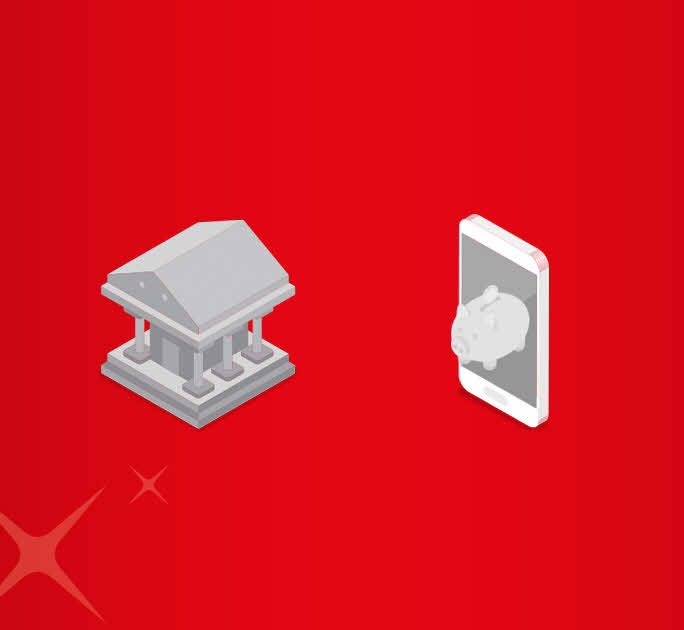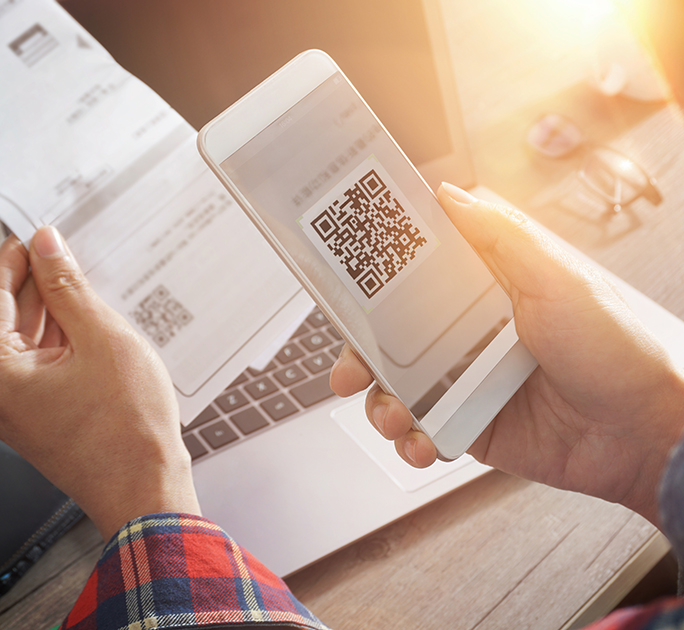- Save
- Invest
- Borrow
- Pay
- More
- Customer Services

What is IMPS? (Immediate Payment Service)
All You Need To Know About IMPS And How It Works
Key Takeaways
- Short for Immediate Payment Service, IMPS is an instant inter-bank electronic fund transfer service.
- You can send money in real-time using IMPS.
- IMPS is available 24x7 throughout the year, including on Sundays and bank holidays.
- You can access IMPS through multiple channels – mobile banking, SMS, Net banking or even ATM.
- You can send money using either a mobile number and MMID or account number and IFSC code.
Introduction
In the last decade, the banking sector in India has evolved by leaps and bounds. Gone are the days when sending and receiving money involved long, cumbersome processes, not to mention the long wait to receive credits. Today, you can transfer funds in seconds, and your beneficiaries can receive them instantly too. Thus, if you need to send money to your loved ones during emergencies or pay for your utilities, groceries, and more, you can simply initiate a quick online fund transfer. One such revolutionary mode of online payments is IMPS. Let us find out what is IMPS transfer and the many ways in which you can initiate it.
What is IMPS in banking?
IMPS full form is Immediate Payment Service. It is an instant electronic fund transfer service that allows inter and intra-bank transfers. In simple word, IMPS helps customers transfer money instantly from one account to another.
Using IMPS, you can send money in real-time, and it will be credited to the beneficiary’s account within seconds. While there is no cap on the minimum transfer amount, the maximum amount you can transfer per day via the Immediate Payment Service is INR 200,000. This fund transfer service is available 24x7 throughout the year, including on Sundays, banks, and state or national holidays. Another significant advantage of IMPS is that people can access this facility through multiple channels, such as mobile banking, SMS, Net banking or even ATMs.
Features & Benefits of IMPS
IMPS (Immediate Payment Service) make transferring money quick, safe, and convenient. It is one of the most preferred digital payment modes in India because of the following features and benefits:
- 24x7 availability: Works any time of the day, including weekends and public holidays.
- Instant transfers: Funds are credited to the beneficiary’s account within seconds.
- Multiple access points: Available through mobile banking, internet banking, ATMs, and even SMS.
- High security: Transactions are protected with strong authentication and encryption.
- Wide reach: Enables interbank transfers across most banks and financial institutions.
- Supports small and large payments: Suitable for daily transactions, bill payments, or urgent fund transfers.
- Linked to banking convenience: With quick fund movement through IMPS, you can also manage your deposits efficiently and track earnings from savings account interest.
How to Use IMPS for Fund Transfers?
If you are wondering how to use IMPS, the process is simple and user-friendly. IMPS allows you to send money instantly using mobile banking, internet banking, ATMs, or even SMS. All you need is the beneficiary’s account details or mobile number and MMID (Mobile Money Identifier). Once you enter the required details and confirm the transaction, the funds are transferred securely within seconds.
IMPS via Mobile Banking
Having explained IMPS meaning, let us find out how to initiate a transaction using your mobile phone. If you want to use the IMPS facility to transfer funds to another bank account through the mobile banking route, you need two things:
- The 10-digit mobile phone number that your beneficiaries have registered with their bank accounts
- The MMID of the beneficiary
MMID means Mobile Money Identifier. It is a 7-digit unique code issued to account holders by their banks to receive money using IMPS. If you have different bank accounts, you will have different MMIDs, even in the same bank. However, you can link them all to the same mobile number registered with your bank account.
Using MMIDs helps in keeping the account details private. Also, you do not need to remember account numbers and IFSC codes. Sending or receiving money is possible by just using registered mobile numbers and MMIDs.
Here is a stepwise guide on how to transfer money using IMPS via mobile banking:
- Log in to the official mobile banking app of your bank on your smartphone.
- Click on the funds’ transfer option.
- Select the IMPS option on your mobile app.
- Enter the necessary beneficiary details such as mobile number, MMID, and amount to be transferred.
- Add remarks for future references (E.g. reason for fund transfer).
- After verifying all the details, submit the fund transfer request.
Both you and your beneficiary will receive a notification upon successful completion of the fund transfer.
IMPS via internet banking
You can also access the Immediate Payment Service facility through net banking. In this case, you can transfer funds using the account number and IFSC code of the beneficiary. Let us check the process of using IMPS via internet banking:
- Log into your net banking account by providing a username and password.
- On the home page, click on the fund transfer option.
- Select IMPS using bank account and IFSC code (you can also use the MMID and phone number option if you have those details).
- Fill in beneficiary details such as account number, IFSC Code, bank branch, etc. It is important to note here that you will first have to register/add a beneficiary to your bank account. You will be able to initiate a fund transfer after approximately half an hour of adding the beneficiary.
- Enter the fund transfer amount and add remarks.
- Confirm payment after verifying details.
You will receive a confirmation message for the fund transfer via both email and SMS
Get started with seamless money transfer with DBS Bank. Download the app now and send money to your family from anywhere!
IMPS via SMS
The great thing about the Immediate Payment Service is that you can still initiate transfers without a net banking account or an internet-enabled smartphone. To make it more inclusive for everyone, banks enable IMPS transfers through SMS as well. So long as you have a mobile phone, you can IMPS facility via SMS as well.
However, to access this facility, you need to register for mobile banking and link your mobile number to your current or savings bank account. Once you have registered for the same, you can initiate a fund transfer through SMS. Here are the steps.
- Send a text on the SMS banking number provided by your bank. Input the text in the same format as suggested by the bank to initiate the IMPS fund transfer request.
- Punch in details like the account number of the payee, IFSC code and the transaction amount. Remember to follow the SMS format given by your bank
- Enter the mPIN when your bank asks to validate the request
Once your mPIN is verified, you will receive an SMS confirming the fund transfer
IMPS via ATMs
Using IMPS at an ATM is a quick way to transfer funds without internet banking or mobile apps. Follow these steps:
- Insert your debit card and enter your PIN.
- Select the “Fund Transfer” or “IMPS” option from the menu.
- Choose the “IMPS via Mobile Number & MMID” option.
- Enter the beneficiary’s mobile number, MMID, and the transfer amount.
- Verify the details shown on the screen.
- Confirm the transaction to complete the transfer.
- Collect the printed receipt for your records.
List of banks
The Immediate Payment Service for fund transfer is currently available between DBS Bank and almost all central banks India’s the public and private sector banks, including regional rural banks, small finance banks, and cooperative banks. To check the complete list, visit https://www.npci.org.in/what-we-do/imps/live-members
What is the IMPS Transfer Limit?
IMPS allows you to send money instantly, but there are certain limits set by banks and the National Payments Corporation of India (NPCI). The IMPS transaction limit can vary depending on your bank and mode of access.
- The IMPS minimum limit generally starts from as low as INR 1, making it convenient for small value transfers.
- The IMPS maximum limit is usually up to INR 5 lakh per transaction, though some banks may set lower limits for new customers or certain channels.
These limits ensure secure and smooth fund transfers while giving you flexibility for both small and large payments.
What are the Charges for IMPS Transaction?
Before you start using IMPS, it helps to know the cost involved. While the IMPS transfer meaning is simply sending money instantly between bank accounts, banks may apply small fees on such transactions.
- IMPS charges usually range from INR 2.50 to INR 25 per transaction, depending on the transfer amount and the bank’s policy.
- Many banks now offer IMPS free of cost for online channels like mobile banking and internet banking.
- The charges, if any, are subject to GST as per government guidelines.
Checking your bank’s specific IMPS charges ensures there are no surprises while making transfers.
How to Enable IMPS on Your Bank Account?
Enabling IMPS is simple and usually requires activating mobile or internet banking with your bank. Once these services are set up, IMPS comes as a built-in feature. Typically, you need to:
- Register for mobile banking or internet banking with your bank.
- Ensure your mobile number is linked to your bank account.
- Generate an MMID (Mobile Money Identifier) through the bank’s mobile app, SMS, or branch service.
- Set a secure MPIN for authentication of transactions.
- Start using IMPS for transfers via mobile apps, internet banking, ATMs, or SMS.
This quick setup allows you to access IMPS 24x7 for instant fund transfers.
Things to Consider Before Using IMPS Services
While IMPS offers speed and convenience, there are a few important points to keep in mind to ensure smooth transactions.
Receiving Money via IMPS with Unregistered Mobile Number
If your mobile number is not registered with your bank, you will not be able to receive money through IMPS using the mobile number and MMID method. In such cases, the sender must use your bank account number and IFSC code to complete the transfer.
Linking Multiple Bank Accounts to One Mobile Number
It is possible to link more than one bank account to a single mobile number. However, you must generate a separate MMID for each account. Always provide the correct MMID to the sender to ensure that the funds are credited to the intended account.
What Happens if an IMPS Transfer Fails?
In case an IMPS transfer fails due to technical reasons or incorrect details, the amount is usually reversed to the sender’s account within one working day. If the reversal does not happen automatically, you can raise a complaint with your bank, quoting the transaction reference number.
Open Savings Account
in 3 easy steps
Opening a savings account online with DBS Bank is simple, fully digital, and requires no branch visits. You can get started within minutes by following these three quick steps:
- Start Online – Visit the DBS Bank website or download the DBS Card+ IN app to begin your instant account opening.
- Keep Documents Ready – Ensure you have your PAN card and Aadhaar card handy for smooth online verification.
- Complete Video KYC – Use your smartphone or computer with camera access to finish Video-KYC. Once verified, your savings account will be activated promptly.
Conclusion
Now that you know what is IMPS transfer and the multiple ways to utilise it, you can access this facility anytime. The IMPS funds transfer facility is among the quickest and safest. It is also a highly cost-effective method of sending a significant sum of money in a single transaction. The fact that IMPS can also be used by those who do not have access to the internet makes it an even more financially inclusive facility.
Download digibank by DBS to effortlessly send money to your loved one with 100% confidence.
*Disclaimer: This article is for information purposes only. We recommend you get in touch with your income tax advisor or CA for expert advice.
Frequently Asked Questions - IMPS
-
What is IMPS wallet number?
An IMPS wallet number is a virtual account number provided by some banks and payment apps that allows users to send or receive money through IMPS without directly using their bank account number.
-
Is a bank account mandatory for IMPS?
Yes, a bank account is generally required for IMPS. However, in some cases, transactions can also be done using prepaid wallets linked to IMPS.
-
What is the difference between IMPS P2P and P2A transfers?
- P2P (Person-to-Person): Transfers using the beneficiary’s mobile number and MMID.
- P2A (Person-to-Account): Transfers using the beneficiary’s bank account number and IFSC code.














